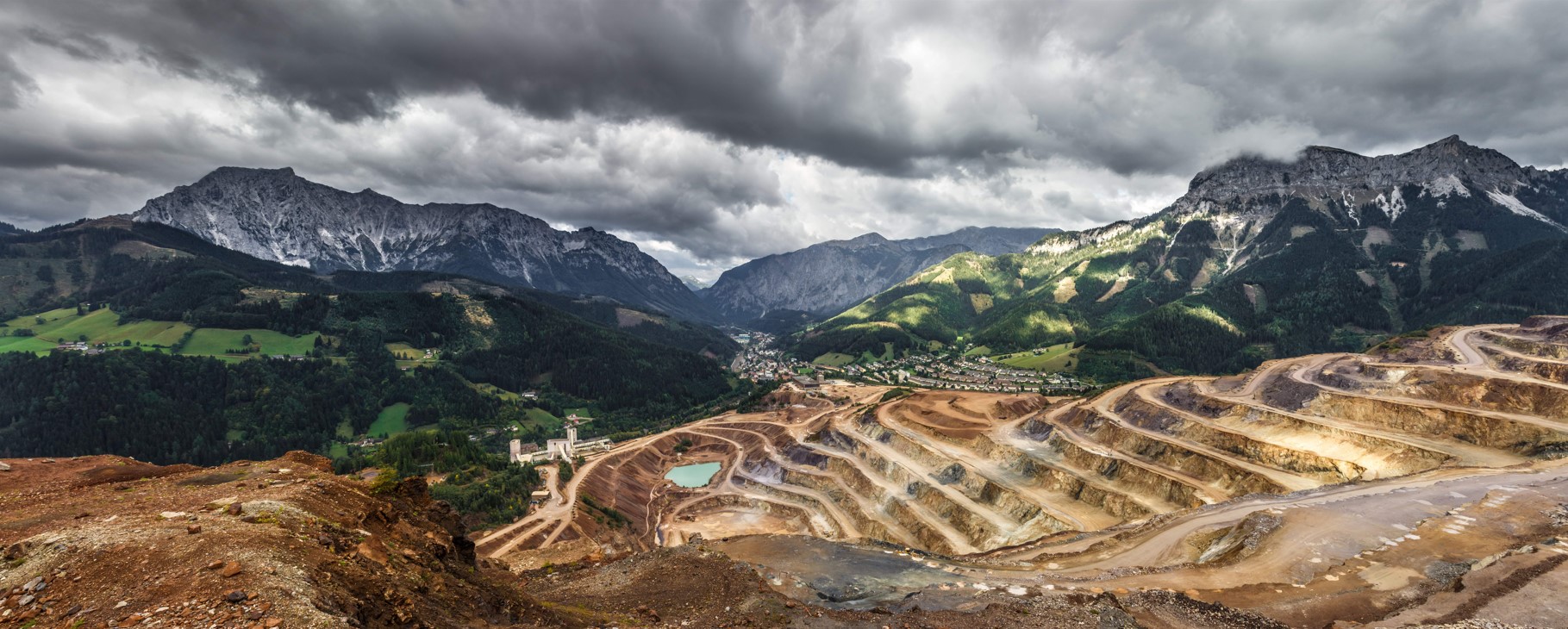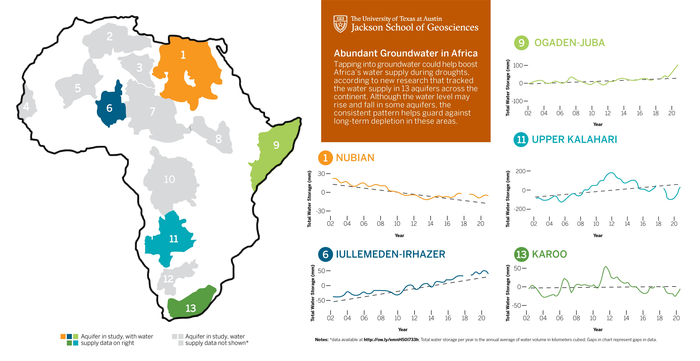Tuesday March 22, 2022 was World Water Day, an annual day of observance hosted by the United Nations which seeks to bring attention to the importance of freshwater and the protection of it as a resource. For many across the globe, access to clean water is a privilege, and equitable management is crucial.
This year’s World Water Day theme is groundwater, which according to the United States Geological Survey is “water that exists underground in saturated zones…[filling] the pores and fractures in underground materials such as sand, gravel, and other rock.” Groundwater is a precious resource across the globe, serving as the source of clean water for drinking and farming.
Hydrologists are studying the world’s groundwater to better understand how to maintain and preserve this precious resource, and in celebration of World Water Day, here’s some of their recent findings.
Using computers to identify toxins in mining wastewater
Bitumen, more commonly known as asphalt, is a highly viscous form of petroleum. Deposits of bitumen, called oil sands, can be found across the globe, where it has soaked into the sand and clay. Open-pit mining is the main method of extracting it, where scoops of oil sand are crushed and mixed with water to allow the bitumen to be separated out. Wastewater with hazardous chemicals generated from this practice can pose a threat to groundwater, but researchers at the University of British Columbia have developed a robust analysis technique using machine learning.
“Current methods require the use of expensive equipment, and it can take days or weeks to get results,” says Nicolás Peleato, assistant professor of civil engineering at the University of British Columbia’s Obanagan campus. “There is a need for a low-cost method to monitor these waters more frequently as a way to protect public and aquatic ecosystems.”

As chronicled in the Journal of Hazardous Materials, Peleato’s research team first collected water samples from a nearby lake to serve as a control. The team then determined the chemical compound of a given sample using fluorescence spectroscopy — where the wavelengths of emitted light from a compound correlate to different elements and chemicals. From here, the researchers trained a neural network of algorithms to search for traces of toxic, organic compounds in water, such as those at open-pit mining sites.
This study serves as a proof of concept, and Peleato cautions that this technology isn’t bulletproof yet, and needs to be further evaluated with a larger sample size.
Climate change is making German aquifers harder to reach
As the climate crisis rages on, a consequence is reduced access to water. As temperatures rise, with particularly notable heat spells in the summer months, so too does the frequency of droughts. Water consumption during a period of increased temperatures can cause reduced crop yields, stunted tree growth in forests, and low river flow, as the local water cycle self-corrects. In short, droughts put a heavy stress on water usage, even in the most water secure areas of the world.
Researchers from the Karlsruhe Institute of Technology and Germany’s Federal Institute for Geosciences and Natural Resources sought to investigate the response of Germany’s groundwater to a warming climate. Publishing their work in Nature Communications, the research team analyzed groundwater level data from 118 different locations across Germany. These data points had a record of groundwater level of anywhere from 15 to 67 years, and any gaps in data were interpolated using the pre-existing data at that spot.
The research team found an overall decrease in groundwater level across the country in the “business as usual” scenario, where global carbon emissions are not curbed and climate change continues unencumbered. In scenarios with ambitious mitigation targets, German groundwater also falls, but less drastically.
The authors mention that their study focuses heavily on shallow aquifers, which are most typically used for human water consumption and almost exclusively for wild flora in various ecosystems. With this, the results of this study illustrate that climate change’s effect on groundwater can pose a major threat to the livelihood of various populations.
How groundwater could offset Africa’s water scarcity
Groundwater is the largest reservoir of freshwater on Earth. While these aquifers can refill during periods of precipitation, as populations continue to grow, some ecologists worry that the world’s aquifers may eventually run dry under increased stress. But Africa is facing a different threat. In Africa, cities and towns frequently rely on surface water — lakes, rivers, or reservoirs — or precipitation to meet their water needs.
While this water is a renewable resource, it is either geographically bound or rare in its appearance during drought seasons. However, new research in Environmental Research Letters may pose a new solution to this problem.
The researchers, led by Bridget Scanlon of the University of Texas at Austin’s Jackson School of Geosciences, studied the role of Africa’s aquifers in offsetting the continent’s water stress. Scanlon’s group first collected data from NASA’s GRACE satellites to track the total water storage in aquifers across Africa during the 18 years between 2002 to 2020.

Scanlon’s team found that most of the aquifers underneath Africa increased their supply of water during the time period of the study. More specifically, during El Nino, East Africa is plagued with wet conditions while southern Africa experiences droughts, and the opposite is true during La Nina. Interestingly, despite a majority of the continent experiencing dry conditions, African aquifers were still able to recharge thoroughly due to the rainfall on the other side of the continent.
“We can more confidently say that these recharge events occur and you can depend on them over the long term,” Scanlon said. “You can assume then that you’re going to get that recharge every several years.”
This and other work reported here calls attention to a precious resource right below our feet. Hydrologists are constantly discovering different ways groundwater is tied to other systems and social dynamics, such as climate change, mining, and water scarcity. Since aquifers are such a crucial source of fresh drinking water for humans, findings like these will help governments and activists better protect groundwater against different threats.
References:
María Claudia Rincón Remolina, et al., Application of machine learning methods for rapid fluorescence-based detection of naphthenic acids and phenol in natural surface waters, Journal of Hazardous Materials (2022), DOI: 10.1016/j.jhazmat.2022.128491
Andreas Wunsch, et al., Deep learning shows declining groundwater levels in Germany until 2100 due to climate change, Nature Communications (2022), DOI: 10.1038/s41467-022-28770-2
Bridget R. Scanlon, et al., Linkages between GRACE water storage, hydrologic extremes, and climate teleconnections in major African aquifers, Environmental Research Letters (2022), DOI: 10.1088/1748-9326/ac3bfc
Quotes by Nicolás Peleato and Bridget Scanlon adapted from press releases by the American Association for the Advancement of Science.














